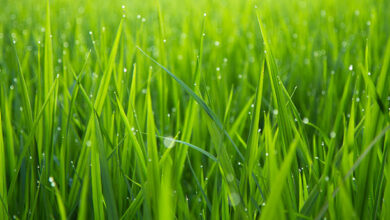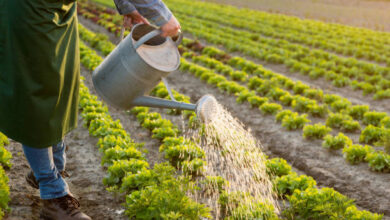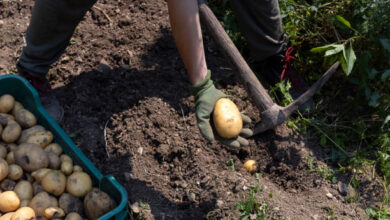Popular Flowers Beginning with ‘S’: Varieties, Characteristics, and Growing Tips
Flowers Beginning with 'S'

Popular Flowers Beginning with ‘S’: Varieties, Characteristics, and Growing Tips
Flowers beginning with ‘S’ offer a captivating array of colors, shapes, and fragrances that can enhance any garden. From the bright and bold sunflower to the delicate sweet pea, these flowers bring diverse beauty and charm to your outdoor space. In this guide, we’ll explore various types of Flowers beginning with ‘S’, their unique features, and provide essential tips for growing and caring for them.
Why Choose Flowers beginning with ‘S’?
Choosing flowers that start with ‘S’ can add a distinctive touch to your garden. These flowers come in various colors and forms, making them perfect for adding contrast, texture, and vibrancy to your landscape. Incorporating ‘S’ flowers into your garden design can create a visually striking display, from bold and sunny blooms to elegant and fragrant varieties.
Popular Flowers Beginning with ‘S’
Here’s a closer look at some popular flowers that start with ‘S’, each offering its own unique appeal and gardening benefits:
- Sunflower

Description and Varieties
Sunflowers (Helianthus annuus) are known for their large, bright yellow blooms that resemble the sun. They come in various varieties, including dwarf types and those with multi-colored petals. Sunflowers can range from tall, dramatic plants to smaller, more compact varieties.
Ideal Growing Conditions and Blooming Season
– Blooming Season: Summer to early fall
– Growing Conditions: Sunflowers thrive in full sun and well-drained soil. They prefer a sunny location and can tolerate a range of soil types but do best in nutrient-rich soil.
Planting and Care Tips
– Planting: Sow seeds directly into the garden after the last frost, spacing them 6-12 inches apart. For tall varieties, provide support if needed.
– Care: Water regularly, especially during dry periods. Fertilize with a balanced fertilizer and remove spent blooms to encourage continuous flowering.
- Sweet Pea

Characteristics and Colors
Sweet peas (Lathyrus odoratus) are beloved for their fragrant, delicate flowers that come in a spectrum of colors, including pink, purple, red, and white. They are climbing plants with a lovely, sweet scent that makes them ideal for trellises and garden arches.
Best Growing Conditions and Blooming Season
– Blooming Season: Spring to early summer
– Growing Conditions: Sweet peas prefer cool weather and grow well in full sun to partial shade. They need well-drained soil and support for climbing.
Planting and Care Advice
– Planting: Sow seeds directly into the garden or start indoors 6-8 weeks before the last frost. Space seeds 1-2 inches apart.
– Care: Water regularly to keep the soil consistently moist. Pinch back the tips to encourage bushier growth and deadhead spent flowers to prolong blooming.
- Salvia

Different Types and Features
Salvia is a diverse genus with many varieties, including Salvia splendens (red sage) and Salvia nemorosa (meadow sage). They are known for their vibrant spikes of flowers in colors like blue, purple, red, and white.
Growing Conditions and Blooming Season
– Blooming Season: Summer to fall
– Growing Conditions: Salvias thrive in full sun and well-drained soil. They are drought-tolerant and attract pollinators like bees and butterflies.
Tips for Planting and Maintaining Salvia
– Planting: Space plants 12-18 inches apart to allow for their spreading habit. Plant in spring after the last frost.
– Care: Water during dry periods and cut back spent blooms to encourage more flowers. In colder climates, mulch around the base to protect roots.
- Stock Flower

Description and Varieties
Stock flowers (Matthiola incana) are known for their dense spikes of fragrant blooms, available in colors such as white, pink, lavender, and red. They are often used in floral arrangements due to their long-lasting flowers.
Ideal Growing Conditions and Blooming Period
– Blooming Period: Spring to early summer
– Growing Conditions: Stock flowers prefer cooler weather and grow best in full sun to partial shade. They need well-drained soil.
Care and Maintenance Tips
– Planting: Sow seeds directly into the garden or start indoors 6-8 weeks before the last frost. Space plants 6-8 inches apart.
– Care: Water regularly to keep the soil moist but not waterlogged. Fertilize with a balanced fertilizer and remove spent flowers to encourage continued blooming.
- Sedum

Features and Varieties
Sedum, also known as stonecrop, is a succulent plant known for its fleshy leaves and star-shaped flowers. Varieties like Sedum ‘Autumn Joy’ produce clusters of pink to red blooms that attract pollinators.
Best Growing Conditions and Blooming Season
– Blooming Season: Late summer to fall
– Growing Conditions: Sedum thrives in full sun and well-drained soil. It is drought-tolerant and suitable for a variety of garden conditions.
Planting and Care Recommendations
– Planting: Space plants 12-18 inches apart. Sedum can be planted in containers or garden beds.
– Care: Water sparingly and allow the soil to dry out between waterings. Fertilize in early spring if needed and trim back old growth in late winter.
- Scabiosa

Characteristics and Colors
Scabiosa, or pincushion flowers, feature unique, tufted blooms in shades of blue, pink, purple, and white. They are known for their long-lasting flowers and ability to attract butterflies.
Ideal Growing Conditions and Blooming Season
– Blooming Season: Summer to fall
– Growing Conditions: Scabiosa prefers full sun and well-drained soil. They are hardy and can tolerate a range of soil types.
Tips for Planting and Maintenance
– Planting: Space plants 8-12 inches apart. Sow seeds directly into the garden or start indoors.
– Care: Water regularly and deadhead spent flowers to encourage more blooms. Cut back in late fall to maintain plant health.
- Shasta Daisy

Description and Varieties
Shasta daisies (Leucanthemum × superbum) are classic garden flowers with large, white petals and yellow centers. They are known for their cheerful appearance and long blooming period.
Best Conditions for Growing and Blooming Period
– Blooming Period: Summer to early fall
– Growing Conditions: Shasta daisies thrive in full sun and well-drained soil. They are adaptable and can tolerate a range of soil conditions.
Care and Planting Tips
– Planting: Space plants 12-18 inches apart. Plant in spring or fall.
– Care: Water regularly and remove spent flowers to prolong blooming. Divide plants every few years to maintain vigor.
- Spider Flower

Overview and Unique Appearance
Spider flowers (Cleome hassleriana) are known for their spidery, long petals and vibrant colors, including pink, white, and purple. They are tall, summer-blooming plants that add a unique touch to garden beds.
Growing Conditions and Blooming Season
– Blooming Season: Summer to early fall
– Growing Conditions: Spider flowers thrive in full sun and well-drained soil. They can tolerate heat and drought.
Planting and Care Advice
– Planting: Space plants 12-18 inches apart. Sow seeds directly into the garden after the last frost.
– Care: Water regularly and remove spent blooms to encourage continuous flowering. Spider flowers can be grown in containers or garden beds.
YOU MAY LOVE TO READ
Buckwheat SeedS: Benefits, Uses, and Growing Tips
Mastering Structure Planting for a Stunning Garden
Spider Legs: All You Need To Know
Choosing the Right ‘S’ Flower for Your Garden
To select the best ‘S’ flower for your garden, consider factors such as climate, soil conditions, and the specific garden design you have in mind. Here’s a comparison chart of different ‘S’ flowers to help you decide:
| Flower | Ideal Conditions | Blooming Season | Maintenance Level |
| Sunflower | Full sun, well-drained soil | Summer to fall | Low |
| Sweet Pea | Full sun to partial shade, well-drained soil | Spring to early summer | Medium |
| Salvia | Full sun, well-drained soil | Summer to fall | Low |
| Stock Flower | Full sun to partial shade, well-drained soil | Spring to early summer | Medium |
| Sedum | Full sun, well-drained soil | Late summer to fall | Low |
| Scabiosa | Full sun, well-drained soil | Summer to fall | Low |
| Shasta Daisy | Full sun, well-drained soil | Summer to early fall | Low |
| Spider Flower | Full sun, well-drained soil | Summer to early fall | Medium |
Conclusion
Flowers that begin with ‘S’ can bring a diverse range of colors, shapes, and fragrances to your garden. By understanding the characteristics and growing requirements of these flowers, you can select the right ones to enhance your outdoor space. Explore these ‘S’ flowers and create a vibrant, beautiful garden display.




